Frost
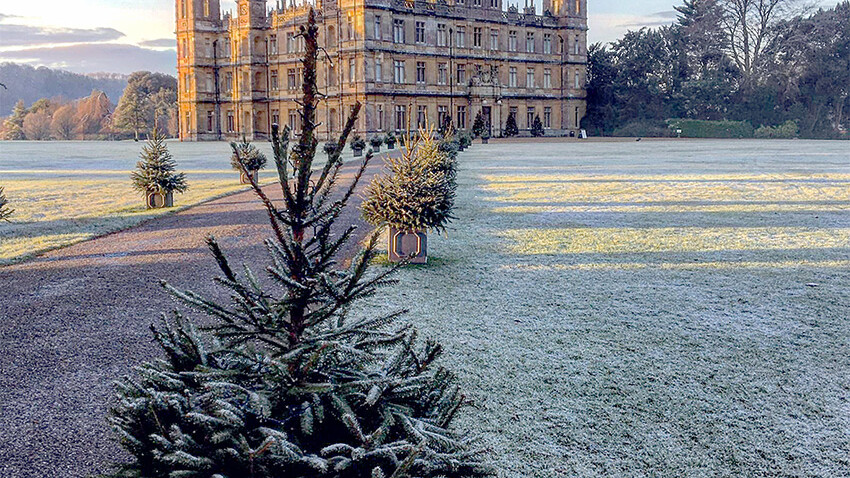
Frost
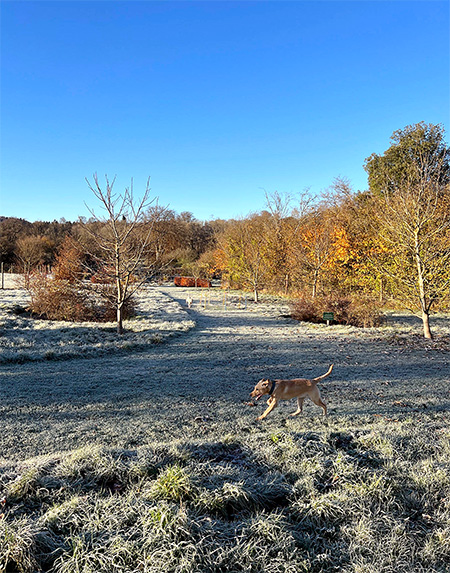 As I bend down to take a closer look at the beautifully decorative icicles on the deep green leaves, the puppies take advantage, thinking I am bending nearer to them for cuddles and licks. They are such lovable and loving four-legged friends but in reality I am just looking at the beauty of a hoar frost.
It is the first properly cold winter weekend we have had this year and Highclere’s world is overlaid with tiny icicles which edge each blade of grass and leaf. It is especially intense where the land rolls down the southern slopes away from the castle. Hoar frosts transform the gardens and parkland into a work of art. As frost rolls downhill, the even colder pockets at the foot of the wildflower meadow stay a deeper wintery white for longer, preserving the otherworldly beauty of such days.
As I bend down to take a closer look at the beautifully decorative icicles on the deep green leaves, the puppies take advantage, thinking I am bending nearer to them for cuddles and licks. They are such lovable and loving four-legged friends but in reality I am just looking at the beauty of a hoar frost.
It is the first properly cold winter weekend we have had this year and Highclere’s world is overlaid with tiny icicles which edge each blade of grass and leaf. It is especially intense where the land rolls down the southern slopes away from the castle. Hoar frosts transform the gardens and parkland into a work of art. As frost rolls downhill, the even colder pockets at the foot of the wildflower meadow stay a deeper wintery white for longer, preserving the otherworldly beauty of such days.
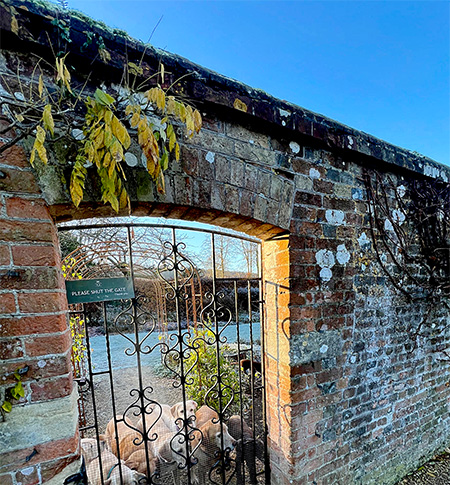 What is so pleasing to the eye, is not necessarily so good for gardeners. From medieval times there was a “frost gate” built into the walls of the Monks Garden through which the frost could roll out leaving behind the precious orchards, herb and vegetable beds. A more modern kitchen garden laid out by Capability Brown in the 18th century also had a frost gate for the same purpose, which Geordie and I have recently renovated to entice the frost away from the vineyard.
What is so pleasing to the eye, is not necessarily so good for gardeners. From medieval times there was a “frost gate” built into the walls of the Monks Garden through which the frost could roll out leaving behind the precious orchards, herb and vegetable beds. A more modern kitchen garden laid out by Capability Brown in the 18th century also had a frost gate for the same purpose, which Geordie and I have recently renovated to entice the frost away from the vineyard.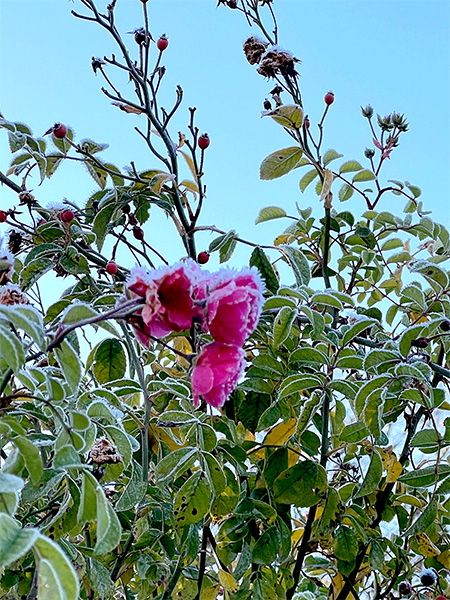 However beautiful and beguiling it is, frost is immensely destructive to more tender plants, although some plants have their own methods to protect themselves by creating a sort of anti-freeze from amino acids. Even evergreen trees, such as pine or cedar, will stop growing during a frost. It is sharp and hard, making everything brittle and promotes hibernation and a pause to life before spring arrives.
As gardeners, we can anticipate cold snaps by moving container plants to sunnier spots near warmer south facing walls whilst a good mulch will help the roots. Some plants such as penstemons are best not cut back: the old growth provides valuable frost protection during the winter as it is less vital if the old tips get frost bitten.
However beautiful and beguiling it is, frost is immensely destructive to more tender plants, although some plants have their own methods to protect themselves by creating a sort of anti-freeze from amino acids. Even evergreen trees, such as pine or cedar, will stop growing during a frost. It is sharp and hard, making everything brittle and promotes hibernation and a pause to life before spring arrives.
As gardeners, we can anticipate cold snaps by moving container plants to sunnier spots near warmer south facing walls whilst a good mulch will help the roots. Some plants such as penstemons are best not cut back: the old growth provides valuable frost protection during the winter as it is less vital if the old tips get frost bitten. The word hoar comes from the Anglo Saxon word “ hār " meaning “of great age, grey and white” which perfectly describes the trees and bushes that look like white hair with feathery patterns of frost painting each leaf and stem like miniature paintings. It is nature’s translucent artistry. However, there are many different types of frost all of which have their own artistry if you are not having to worry about their adverse effects and the whorls of frost on window panes is a well remembered picture from childhood.
The word hoar comes from the Anglo Saxon word “ hār " meaning “of great age, grey and white” which perfectly describes the trees and bushes that look like white hair with feathery patterns of frost painting each leaf and stem like miniature paintings. It is nature’s translucent artistry. However, there are many different types of frost all of which have their own artistry if you are not having to worry about their adverse effects and the whorls of frost on window panes is a well remembered picture from childhood. 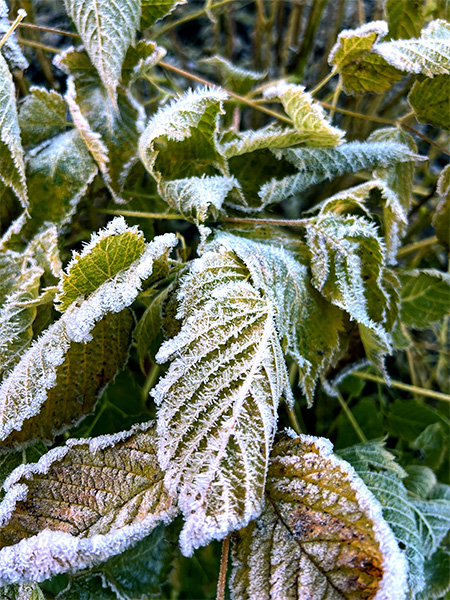 Frost also lends itself to the stories and myths of fireside evening on the short dark days of winter. Jack Frost is an elfish creature, both full of mischief and a hero. He seems to be responsible for the window works of art as he is often depicted with a paint brush in hand as if he is about create the fern-like patterns of frost found on windows on cold mornings. In parts of the world where the types of snow and frost pay a greater importance than here, there are many different words to describe all the nuances but these are fading from our language today.
However, as we look forward to Christmas and the music and carols, mornings like this always remind me of one of my mothers favourites which she loved to sing:
“In the Bleak Midwinter
Frosty wind made moan,
Earth stood hard as iron
Water like a stone”
It is a wintery carol yet has a simple, haunting tune everyone can sing and it a story of relationships between the earth, animals and people and a moment of peace.
Frost also lends itself to the stories and myths of fireside evening on the short dark days of winter. Jack Frost is an elfish creature, both full of mischief and a hero. He seems to be responsible for the window works of art as he is often depicted with a paint brush in hand as if he is about create the fern-like patterns of frost found on windows on cold mornings. In parts of the world where the types of snow and frost pay a greater importance than here, there are many different words to describe all the nuances but these are fading from our language today.
However, as we look forward to Christmas and the music and carols, mornings like this always remind me of one of my mothers favourites which she loved to sing:
“In the Bleak Midwinter
Frosty wind made moan,
Earth stood hard as iron
Water like a stone”
It is a wintery carol yet has a simple, haunting tune everyone can sing and it a story of relationships between the earth, animals and people and a moment of peace.
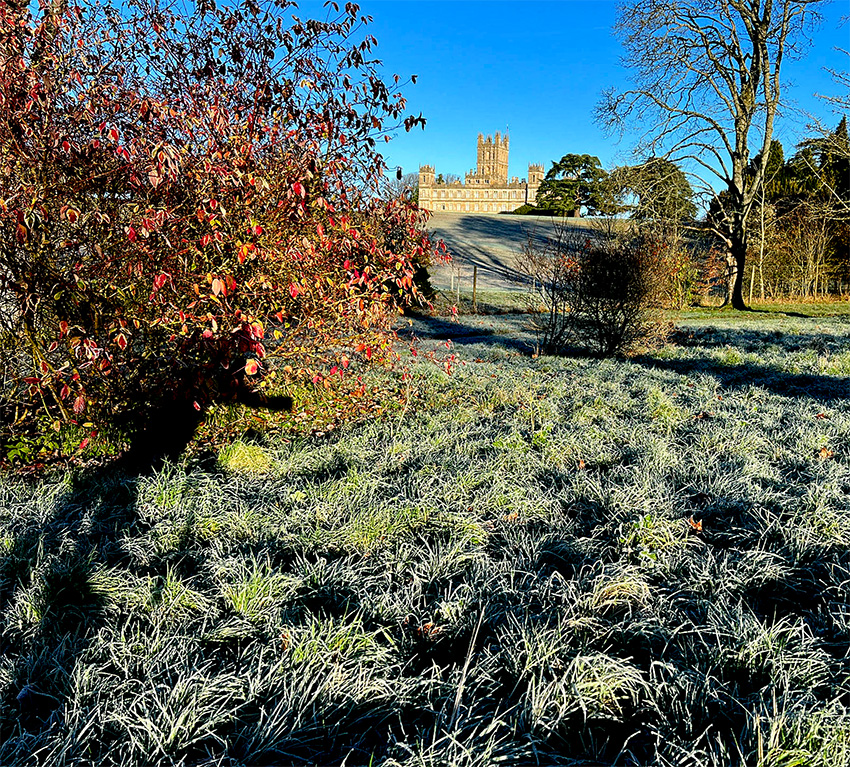
34 Comments
This is a delightful post complimented by a series of truly beautiful pictures. In a world of often dark news this made my morning so much brighter! Thank you x
Such a sheer delight to read your latest Blog Lady Fiona and what beautiful photos of winter wonderland in glorious surroundings. Love leading your wonderful articles eveytime I receive them. I visited last July (from Sheffield) by coach and am so hoping to come again net year. My disabled friend Mavis loved the interior & we just managed the Egyptian exhibition in time before had to leave. There's so much more to see, isn't there. My first interest in Highclere was in 1974 when Tutankhamen exhibits came to the British Museum in London. The queue went all way round outside, so didn't have time to queue, got a book & have always been fascinated in all things to do with Egypt. One day I'll get to Cairo & see the really gold mask & did see recent show in Saatchi Gallery tour of original items 2020. We met Louis by door to your exhibition & such a lovely guy enticing us to try the gin which we bought. You are such an inspiration & I love all that you do, hope to met you next. Kind Regards
Thank you sooo much
I have been to visit highclear two years ago and I am Always really happy to read some news from tour estate ,hère in Bordeaux
I love how you follow the seasons in your blog. Especially when you include your garden and dogs. It is what we need in this worried world.
Thank you
I concur, always delighted to view this site, photographs are beautiful. In addition the history lessons are an added bonus.
Lady Carnarvon, your writing is thoughtful, descriptive as well as entertaining. Thank you.
Thank you!
I hope a welcome distraction
I’m impressed. I love learning new things. Well done. Beautiful pics
Thank you. So beautifully written and so interesting.
Thank you! So very beautiful !
It is so entrancing
what a beautiful site , and beautiful pictures , THANK YOU X
I have followed your blog for several years as it's my Monday morning treat with that first cup of coffee ! Thank you.
That is very kind!
Fabulous ‘blog’ as always, thank you. Really cheers me up every Monday especially on such a cold wet day as today.
It has rained so much this year
Thank you! So very beautiful.
fondly Jenny
Lady Carnarvon,
Thank you for the delicacy of your blog this cold morning. Memories of nature’s artistry on window panes, tiny leaves touched by nature’s icy paint brush - and how we try to gently protect our gardens. Frosty Highclere is beautiful, as always!
Martha G
I think we have a little more frost on the way
How lovely it would be.... to see the grounds of Highclere transformed into a frosty wonderland. It would almost be as if the grounds were preparing for a long sleep until spring.
Thank you for reminding us of the world of beauty that awaits us to be observe just outside our door.
Here in Noth Carolina we had our first frost early in November which ended my gardening and created many green tomatoes in my kitchen.
The positive take away was the 13th green sparkling like a carpet of diamonds in the sunlight.
I will love any nature as it comes!
The Best to you and yours in this Holiday season.
Carole O
Charlotte NC
That is a lovely expression - carpet of diamonds..
The photographs are stunning and although I believe that Highclere is beautiful all year round, it is especially so in the autumn and winter season. It remains a special place I used to visit with my husband and your blogs are so interesting and remind me of wonderful memories. Thank you.
How beautiful Lady Carnarvon! Nature is so magnificent!
Nature is extraordinary
Beautiful photos! I always learn something new from your posts! Thank you!
Dear Lady Carnarvon,
Thank you so much for a truly delightful article, your beautiful photographs are a joy to behold on this dark rainy November morning, & for that I truly thank you.
Love to you all,
Caroline xxx
Lovely the picture of frost did you and lord Carnarvon have a nice weekend and lovely to visit Highcelere castle and l am fan of Downton Abbey thank you for the email
Love this entry about frost
Carol Long
Baltimore, Maryland
Thank you so much
Another beautiful and informative Blog Lady Carnarvon! Good luck to all your cute little puppies and your older dogs and all your sheep and other animals that roam and walk around your property when frosted and is snowed upon and you too when you walk your dogs out and about. All the garden items look lovely with even a layer of frost and you are so correct as how beautiful frost can make many of them look and all grass covered areas too.
Thank you for another Monday Morning Blog.
Remain well and warm,
I was so eager to read and see pictures of frost at Highclere… beautiful as always! Our dog loves the frost too! Thank you for sharing!
Dear Lady Carnarvon. The photos are lovely and your description of the scenery was magical As always I look forward to the Monday blogs
Such a wonderful read. Thank you.
So blessed to have full 4 seasons as you do, Lady Carnarvon. Just put all gardens to bed with an assortment of shredded leaves on top.
Looked up your mother’s favorite and beautiful lyrics:
https://youtu.be/NNbe9sthLz4?si=MpuXViA-0lYyZB1g
I can hear her voice!
Sandria Maddocks Derby
So interesting, I had no idea about frost gates, what a good idea. Highclere
looks beautiful in white.
Best wishes.
x
They are useful!
Beautiful word pictures and actual images! Thanks again for a wonderful article.
My wife and I will be enjoying a week in December in England. Looking forward to many days of English Christmas celebrations!
Montréal, QC
November 27, 2023
Always love your fabulous descriptions. This week "The frost": I can hear the "crispy grass" under the feet when you walk on it. We have it too in Montréal.
Cheers!
Odette
Cheers!
Dear Lady Carnarvon,
Thank you for such lovely story telling! I’m looking forward to more about Christmas at Highclere. I love also watching the videos you have on instagram. I look forward every Monday for a new post! Amazing photography also! :) I wish it snowed where I lived but I can enjoy the photos of winter.
'Tis a "frosty" blog this Monday, but full of warm and comfy inspiring thoughts of the season. The photos are like fine art work, so delicate the frost on the plants! Thank you for always sharing the beautiful moments of life at Highclere. Wishes for good health and happiness as we enter the joyful Holiday Season!
Thank you so much
Absolutely magical - we have seen a few frosts here already this Fall and it is interesting to see where the dog has been by the footprints!!
I did not know about the frost gates however, nor the origin of the word HOAR - your blogs are always so educational as well as so beautifully written.
Thanks
Karin
Vancouver BC
It is a magical landscape
Dear Lady Carnarvon,
Thank you for the beautiful description of a wintery wonder land. The pictures are wonderful. We have had snow here but very little frost as of yet. The frost gates are interesting. Glad to read the puppies are doing well. Take care.
Susan
The puppies are hilarious
Highclere looks beautiful , almost like a watercolour painting yes vey pretty
Lady Carnarvon,
I had never heard of a "frost gate" before today.
I hope the one that you recently renovated works!
I shivered as I looked at your "hoary" photographs.
Frost gates are very practical
Thank you for another great read ,brings it back to reality as I’m in Spain on holiday but no place like home ,and the English frosts !!
Thank you, Lady Carnarvon, for taking me to your lovely setting. Living in the San Francisco Bay Area, we don't experience much frost, let alone snow. So winter scenes are always a welcomed sight.
Warm hugs,
~Anna~
They are exciting days
This morning, we awoke to a chilly 29 degrees Fahrenheit on our farm in Northern California. I went outside for a couple of quick chores and took some photos of my red roses, laden with ice crystals. Back indoors, I was enjoying some hot coffee by the fire whilst I perused my email. I came upon Lady Carnarvon's blog, and was stunned to see a photo of some frosty red roses, very similar to mine! What a lovely coincidence, that although many miles apart, we experienced the same exquisite beauty of nature! Thank you for sharing, Lady Carnarvon!
Nature is great artist
Dear Lady Caranarvon:
Thank you for this Monday's blog and such detailed, sharp pictures. It was a great read as the weather here in Southeastern Michigan has turned frosty, icy, snowy, and windy. To think, it is not even December!
Until next week, all the best to you.
Perpetua Crawford
You should make a book of all your blog post. I enjoy re-reading some of them!!! Thank you for always sharing with us!!
You are every kind
A wonderful blog, as usual! Frost could be an analogy for life. Beauty is not always a positive thing.
I love your writing and your photos and your uplifting content and everything about your blog! Thank you so much for giving us this!
Leave a Comment
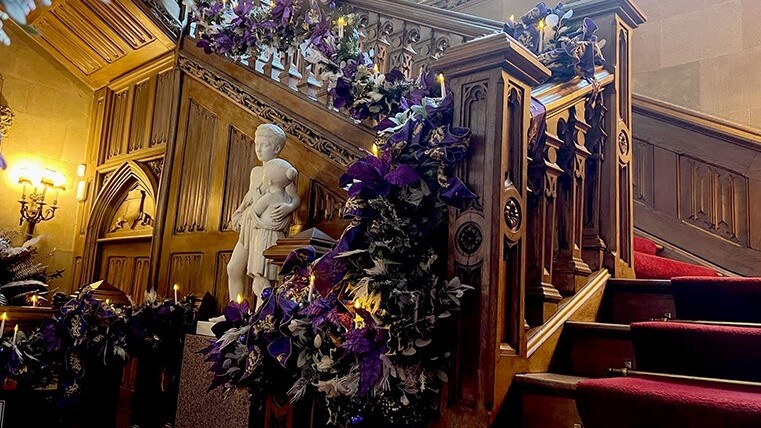
- Christmas
- Community
- Dogs & Horses
- Egypt & Tutankhamun
- Entertaining
- Farm
- Filming
- Gardens
- History & Heritage
- Daily Life
- Royalty
- Cooking
- Interiors
- Heroes
- Architecture
- Cars
- Conservation
- Downton Abbey
- Events
- Gardens & Landscape
- Highclere Castle Gin
- History
- Planes
- Restoration
- Stories & Books
- Uncategorized
- Visitors
- Wildlife

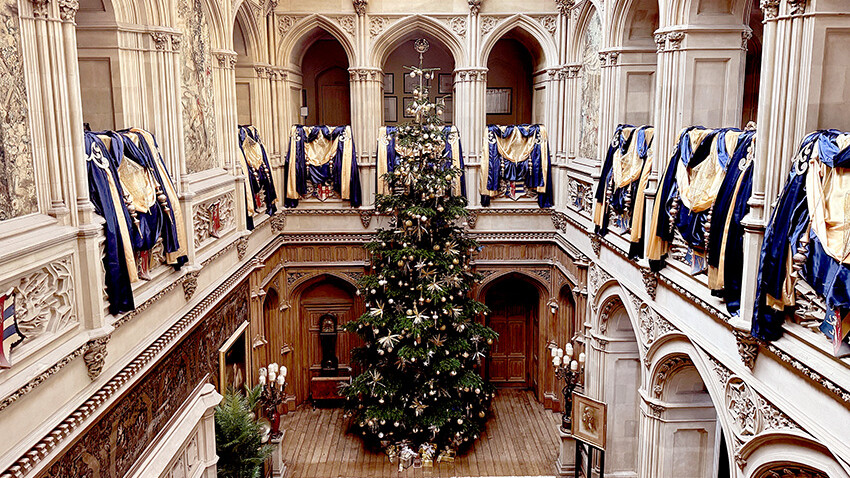
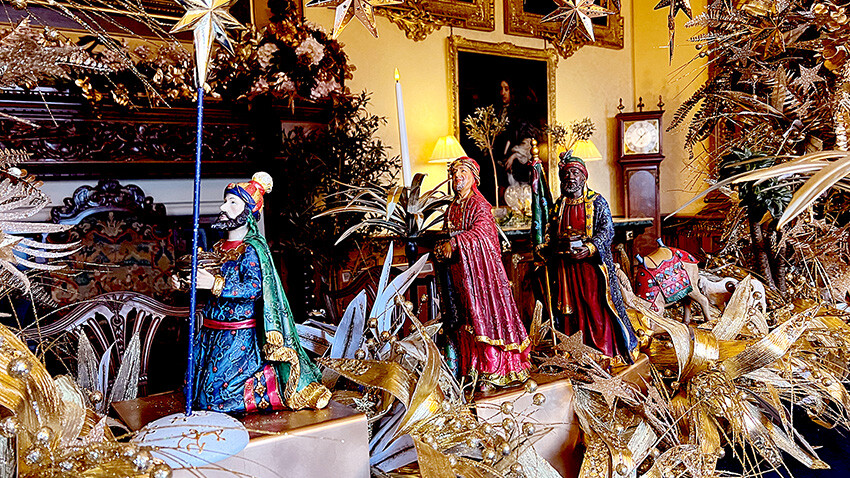

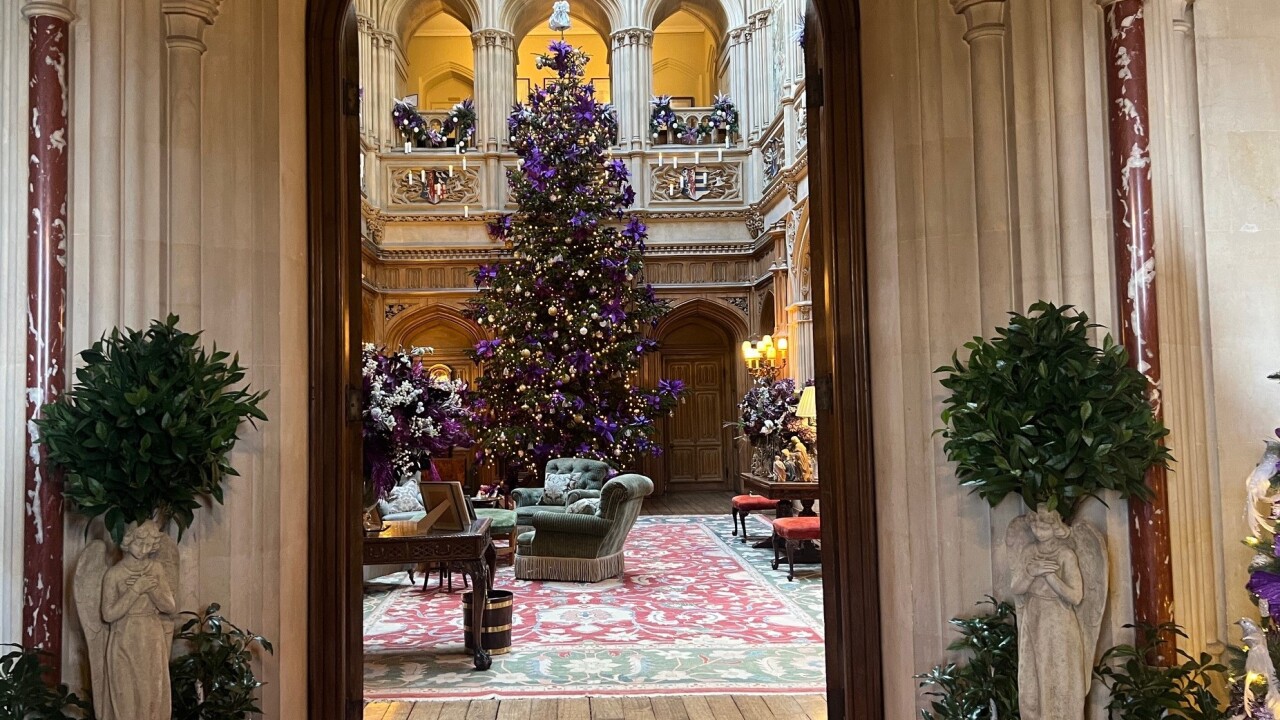
Love reading your 'blogs'. Rain tipping down here in Hungerford. One day I hope
will manage to visit Highclere but have no car so must wait for a 'lift'. Diana B.
Beautiful pictures!
We visited England on October 2023, but I wasn't able to visit Highchair, I didn't make reservations. Hope to visit soon.
Happy Holidays